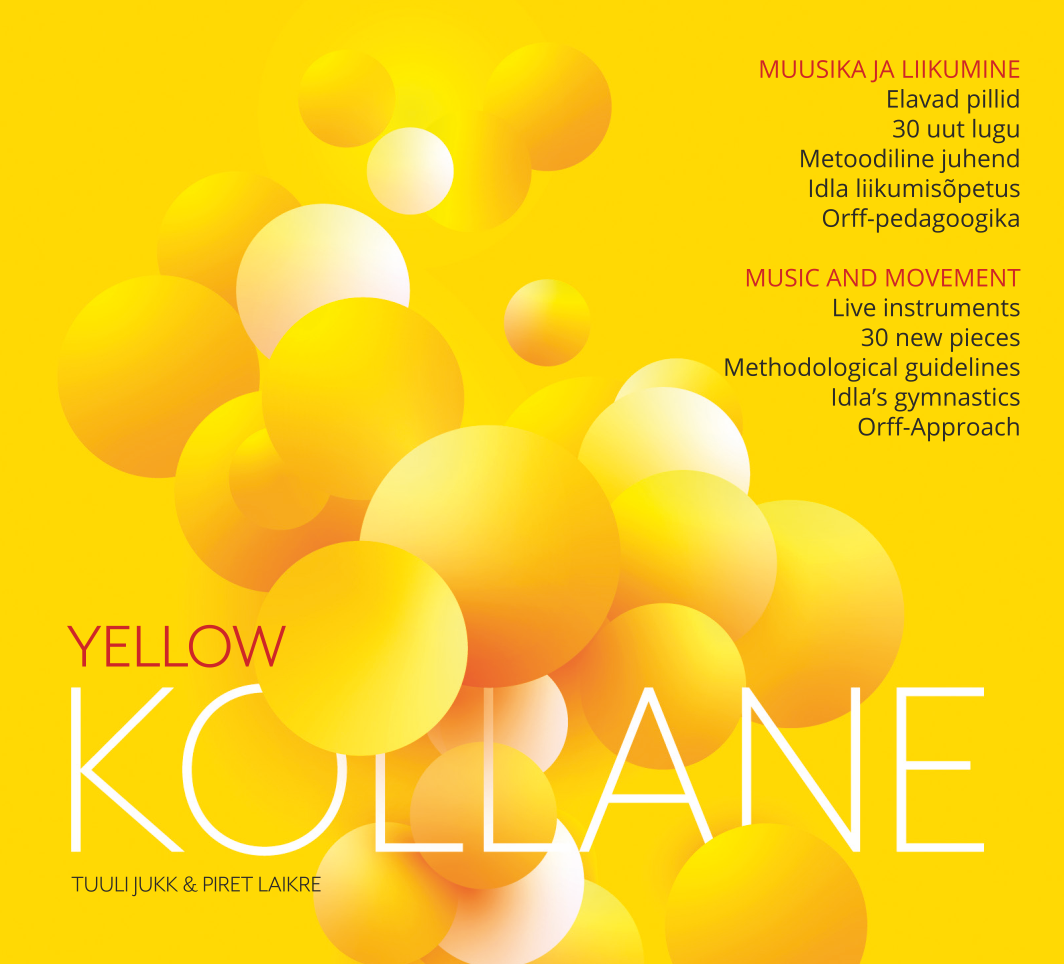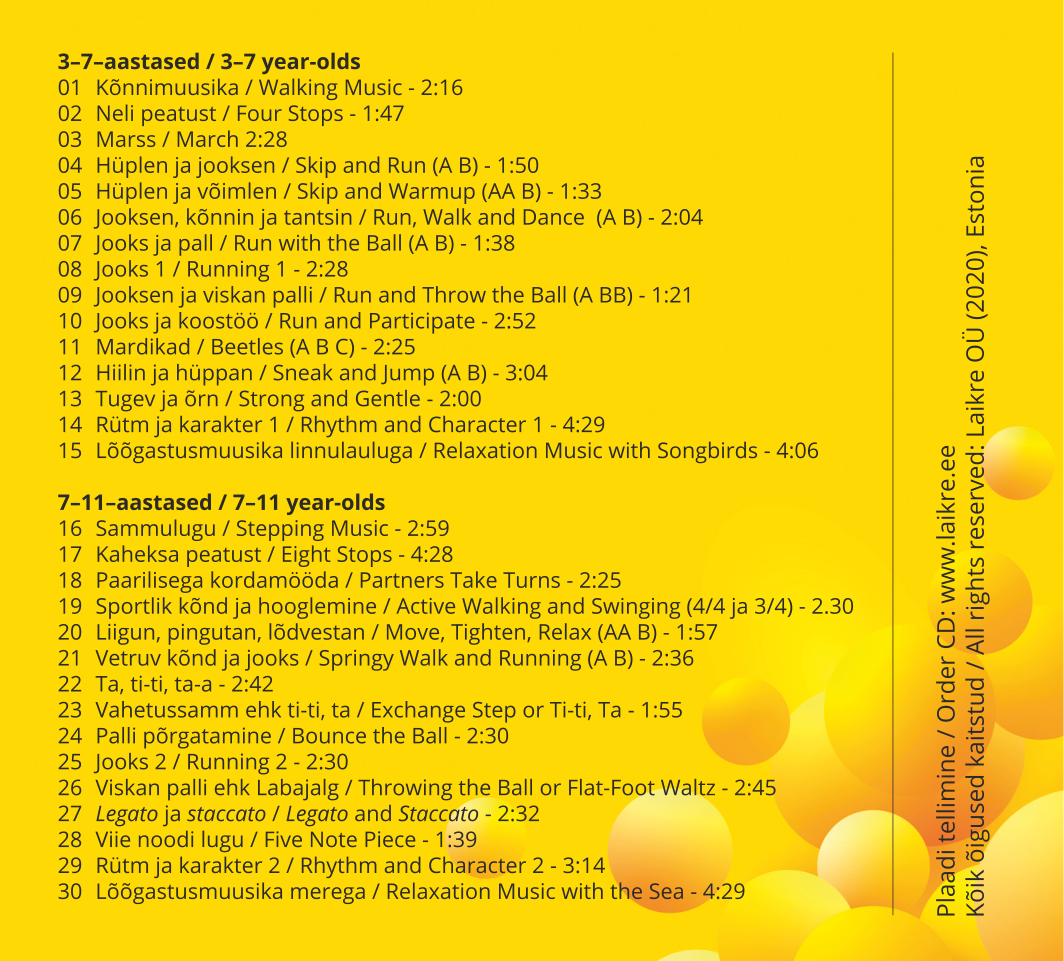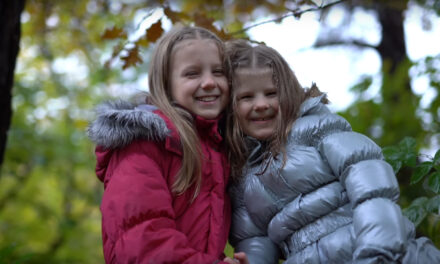INSTRUMENTAL MUSIC WITH METHODOLOGICAL GUIDELINES
“Music begins with being a human, the same is with teaching. It does not start from the instrument, with the first finger or first position, it does not start with this or that chord. To start, one needs to recognise his/her own pulse and breathing.” (C. Orff)
3-7 year-olds
01 Walking Music
02 Four Stops
03 March
04 Skip and Run
05 Skip and Warmup
06 Run, Walk and Dance
07 Run with the Ball
08 Running
09 Run and Throw the Ball
10 Run and Participate
11 Beetles
12 Sneak and Jump
13 Strong and Gentle
14 Rythm and Character
15 Relaxation Music with Songbirds
7-11 year-olds
16 Stepping Music
17 Eight Stops
18 Partners Take Turns
19 Active Walking and Swinging
20 Move, Tighten, Relax
21 Springly Walk and Running
22 Ta, ti-ti, ta-a
23 Exchange Step or Ti-ti, Ta
24 Bounch the Ball
25 Running
26 Throwing the Ball or Flat-Foot Waltz
27 Legato and Staccato
28 Five Note Piece
29 Rhythm and Character
30 Relaction Music with the Sea
In music and in movement there are the same means of expression, but they manifest themselves differently – in music we will hear and in movement we will see. In primary education, means of expressing music are metre, rhythm, melody, tempo, dynamics, timbre and character. Paying attention to means of expressing music, gives movement an extra quality, it teaches to listen and understand music.
In this collection of music and movement we have been directed from two important directions: Idla movement teaching and Orff pedagogy.
Ernst Idla (1901-1980) – Estonian gymnastics educator. Idla’s physical education is based on the teaching and development of five physical skills and abilities: coordination (dexterity), flexibility-mobility, strength, endurance and speed.
Carl Orff (1895-1982) – German composer and music teacher. Orff pedagogy is based on combining speech, movement and music into a learning process in which rhythm is a component that binds music education elements. The collection of music and movement is divided into two parts: music and movement activities for 3-7 years old (tracks 1-15) and for 7-11 years old (tracks 16-30).
There are description of two uses for each piece of music: Idla’s movement and rhythmical movement. Multi-layered exercises offer ample room for manoeuver here. Movement descriptions are provided in free form.
“In movement education, we can develop the interaction between music and movement to such an extent that music becomes visible through movement and movement through music is heard.” (E. Idla)
Musicians:
Viljar Kuusk: (violin, viola); Tõnis Kivisild (bass); Tõnis Teras (bass); Cätlin Mägi: (bagpipes, jew’s harp); Martin Kuusk (soprano-, alto, tenor saxophone, clarinet, flute); Nikita Matsuk (French horn); Oliver Mazurtšak (electric guitar); Hans Kristjan Aljas (electronic drums, effects); Andre Laikre (piano); Jordan Laikre (percussions); Tõnu Laikre (keyboards, bass); Piret Laikre (acoustic guitar, keyboards, xylophone, glockenspiel, percussions, block flute, melodica)
Music and arragements: Piret Laikre
Methodological guidelines: Tuuli Jukk, Marju Järvpõld, Piret Hinrikus-Sage, Tiia Kadalipp, Katrin Reinup
Concept and production: Piret Laikre (www.laikre.ee), Tuuli Jukk
ORDER CD YELLOW
Price 30€ + delivery cost






